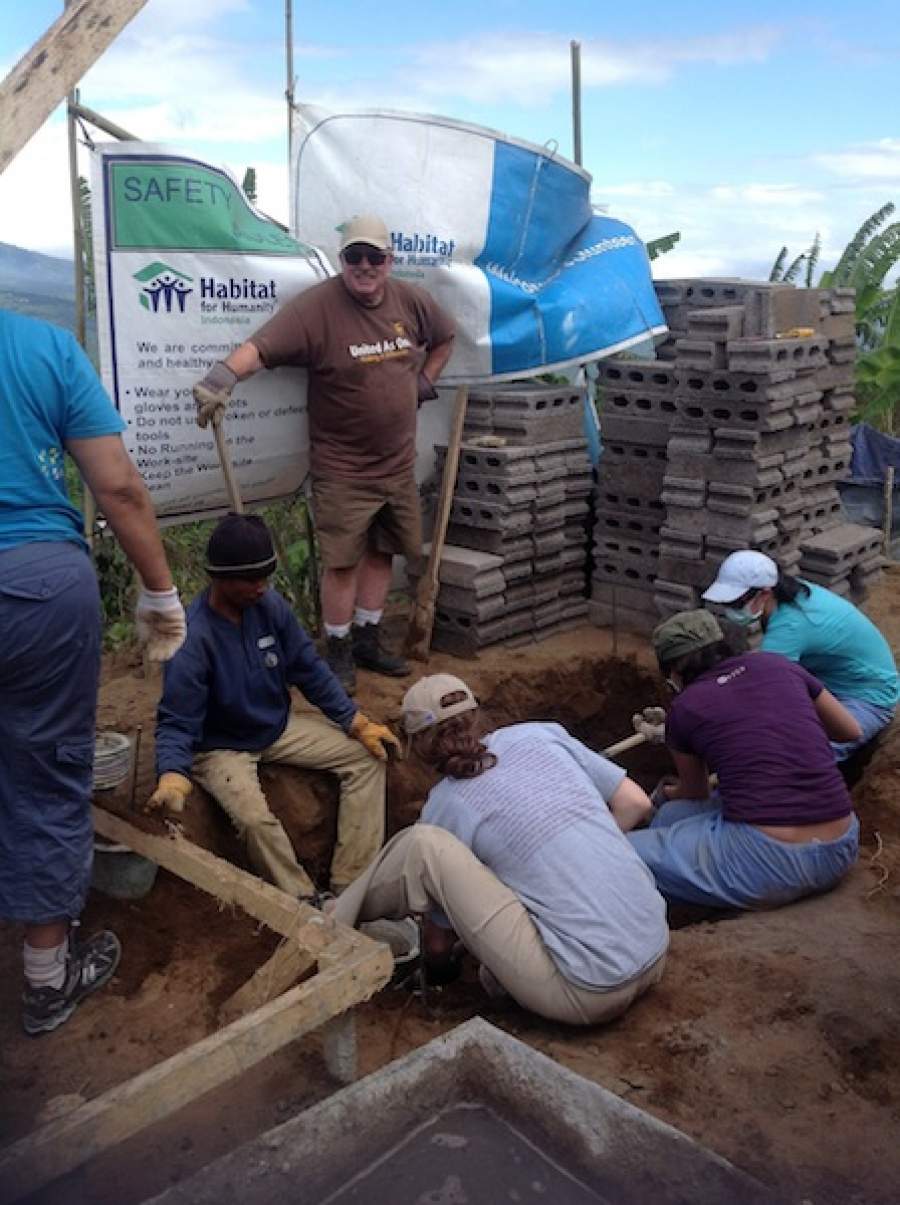"In Bali, the calendar looks more like a dictionary," jokes Clareta, a program manager for Habitat for Humanity Indonesia's Bali Project. "Every day is something special."
Making our way to our build site along a winding road that cuts through Bali's Singaraja district, Clareta explains that nearly every day of the year marks some sort of celebration or religious ceremony here. As we dodge the uniformed schoolchildren, dozing dogs and clucking hens that share the impossibly narrow thoroughfare, we learn that certain days honour long-deceased ancestors, while others pay tribute to metal objects (hence the intricate woven ornaments we see adorning the handlebars of nearly every motorbike that zooms past our van). No matter what the occasion, the Balinese leave religious offerings—small bamboo bundles of hydrangea and other flowers, fruit, incense, cookies and candies—outside their homes and businesses three times daily.
Additionally, the people of this island nation schedule the events of their lives carefully around auspicious dates; there are good days to get married, for instance, and good days to begin building a new home. As such, July 4 has been specially chosen to break ground on the house we (13 volunteers from Canada, the U.S., England and Australia, plus Clareta and two construction supervisors, Agnes and Kefi) will be constructing for a local family.
When we pull up to the site, the Suardika family is waiting, all smiles. Kadek and his wife, Sriasih, will work side-by-side with us for the next week, constructing a simple, decent and affordable home on a four-hectare plot of land. Kadek, a hydrangea farmer who earns a meagre monthly salary, inherited the land from his father. Though the house will be small and basic, it will be a vast improvement over the family's current dwelling—a makeshift wooden structure with no plumbing or electricity situated on their landlord's property.
As we watch Kadek and Sriasih's children—Putu, 5, and Gita, 2—run, giggling, among the blue blossoms their father tends to (a task that earns him approximately 25,000 rupiah or $3 every 10 or so days), Clareta, Agnes and Kefi explain that the house we are building may not seem like much, but has been designed to meet many of this family's current human needs. Just large enough to include a kitchen, bedroom and bathroom, the home will feature sturdy cement walls, a zinc roof that won't leak and a proper plaster floor on which the kids can safely play. Additional rooms can easily be added as the family's financial situation improves.
Habitat for Humanity has constructed 11,500 similar homes in Indonesia through its regular and disaster-response programs. Brick by brick, we will add one more dwelling to organization's tally over the next week. As the first shovel hits the earth, we glance at our surroundings—a lush green landscape of banana and tangerine trees and terraced rice fields graced by a bright blue bowl of a sky—it does indeed feel like a good day to start building a better future for a deserving family.

